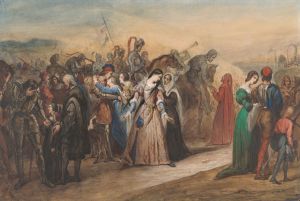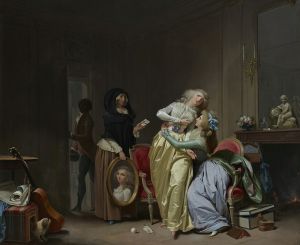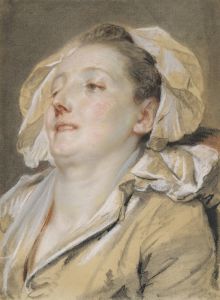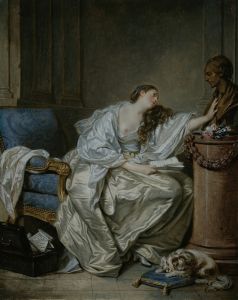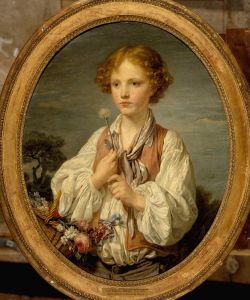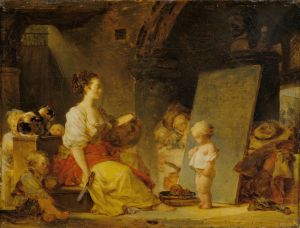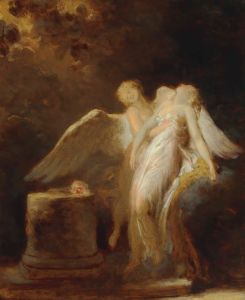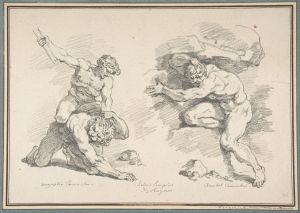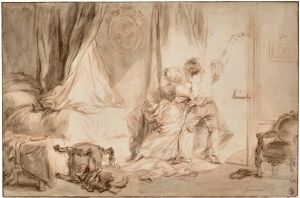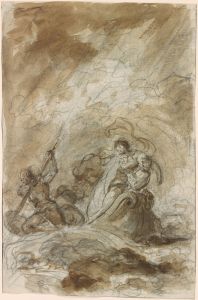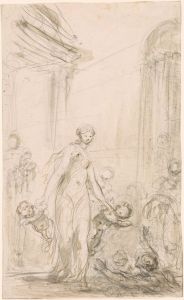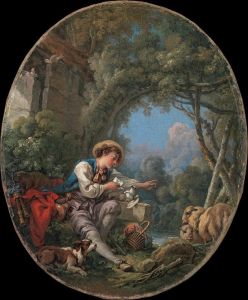
The Love Letter
A hand-painted replica of Jean-Honoré Fragonard’s masterpiece The Love Letter, meticulously crafted by professional artists to capture the true essence of the original. Each piece is created with museum-quality canvas and rare mineral pigments, carefully painted by experienced artists with delicate brushstrokes and rich, layered colors to perfectly recreate the texture of the original artwork. Unlike machine-printed reproductions, this hand-painted version brings the painting to life, infused with the artist’s emotions and skill in every stroke. Whether for personal collection or home decoration, it instantly elevates the artistic atmosphere of any space.
Jean-Honoré Fragonard's "The Love Letter" is a notable example of 18th-century French Rococo painting, a style characterized by its ornate elegance, lightness, and playful themes. Fragonard, born in 1732 in Grasse, France, was a prominent artist of his time, known for his exuberant and fluid brushwork, which is evident in this particular work.
"The Love Letter" is believed to have been painted around the mid-1770s, a period when Fragonard was at the height of his artistic career. The painting is a quintessential representation of the Rococo style, which was popular among the French aristocracy for its focus on themes of love, romance, and leisure. This style often depicted scenes of intimacy and flirtation, set in idyllic and opulent environments.
In "The Love Letter," Fragonard captures a moment of romantic intrigue. The painting features a young woman seated in a lavish interior, holding a letter, presumably a love letter, which she gazes at with a sense of delight and contemplation. The setting is richly decorated, with luxurious fabrics and ornate furnishings, typical of the Rococo aesthetic. The woman's expression and the intimate setting suggest a narrative of secret admiration or romantic anticipation.
Fragonard's use of color and light in "The Love Letter" is particularly noteworthy. He employs a soft, pastel palette that enhances the painting's romantic and dreamy atmosphere. The light appears to gently caress the woman's face and the surrounding objects, creating a sense of warmth and intimacy. This masterful handling of light and shadow is a hallmark of Fragonard's technique, contributing to the overall allure and charm of the scene.
The composition of the painting is carefully arranged to draw the viewer's attention to the central figure and the letter she holds. Fragonard's fluid brushstrokes and attention to detail bring the scene to life, capturing the textures of the fabrics and the delicate features of the woman's face. The painting's intimate scale invites viewers to engage closely with the subject, enhancing the personal and private nature of the moment depicted.
"The Love Letter" reflects the social and cultural milieu of 18th-century France, where themes of love and courtship were often explored in art and literature. Fragonard's work, with its emphasis on beauty and pleasure, was well-received by the aristocracy, who were the primary patrons of Rococo art. However, as the century progressed, the Rococo style fell out of favor, overshadowed by the rise of Neoclassicism and the changing political landscape leading up to the French Revolution.
Today, "The Love Letter" is housed in the Metropolitan Museum of Art in New York City, where it continues to be admired for its artistic excellence and its representation of the Rococo era's sensibilities. Fragonard's ability to convey emotion and narrative through his art ensures that "The Love Letter" remains a significant work in the history of French painting.





